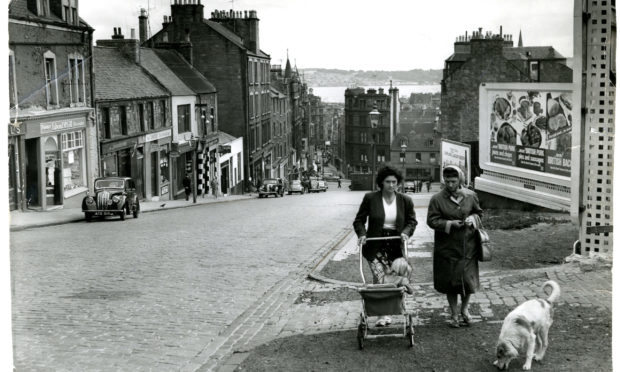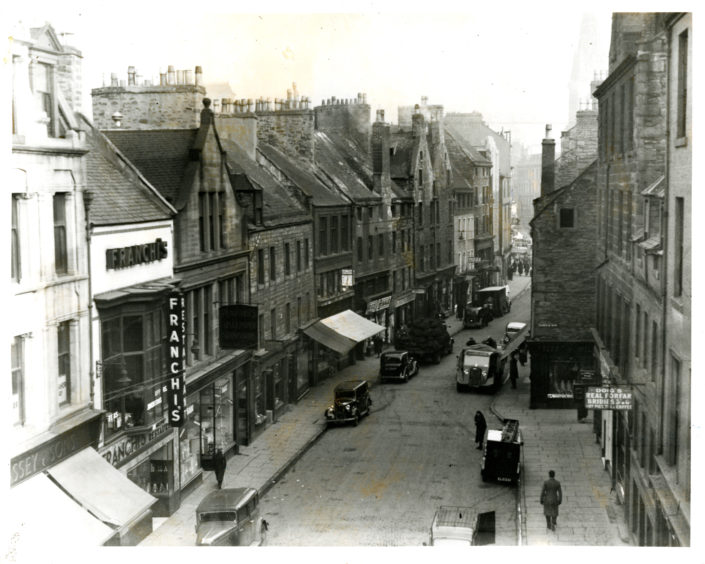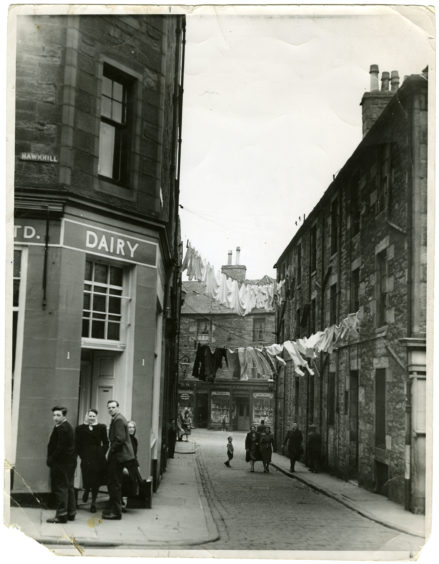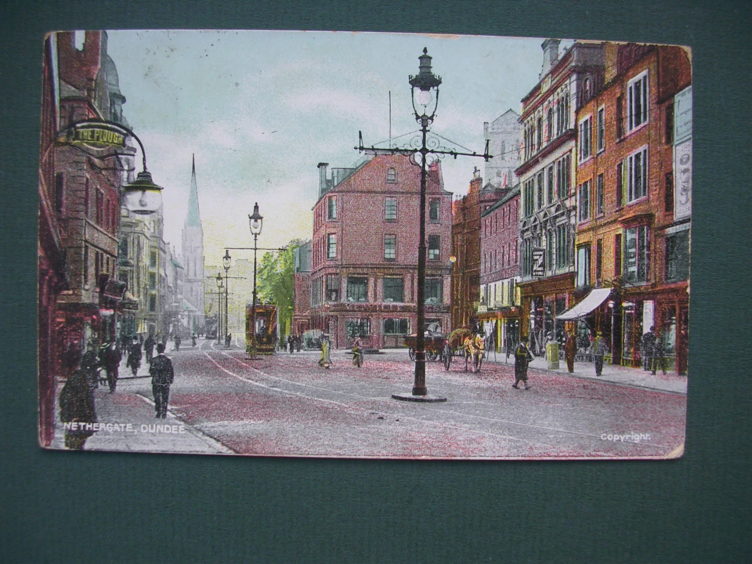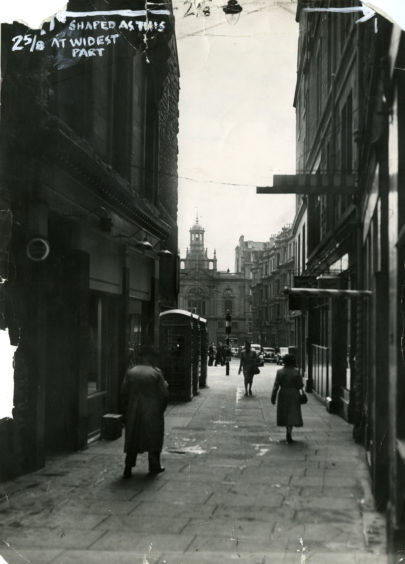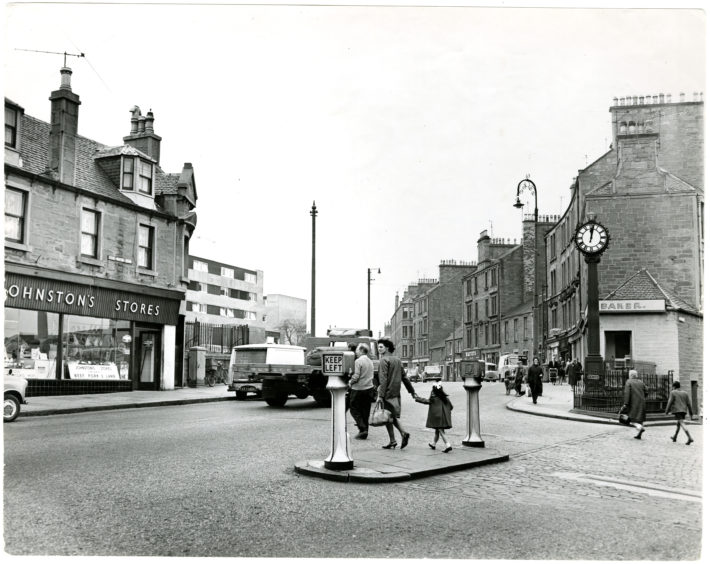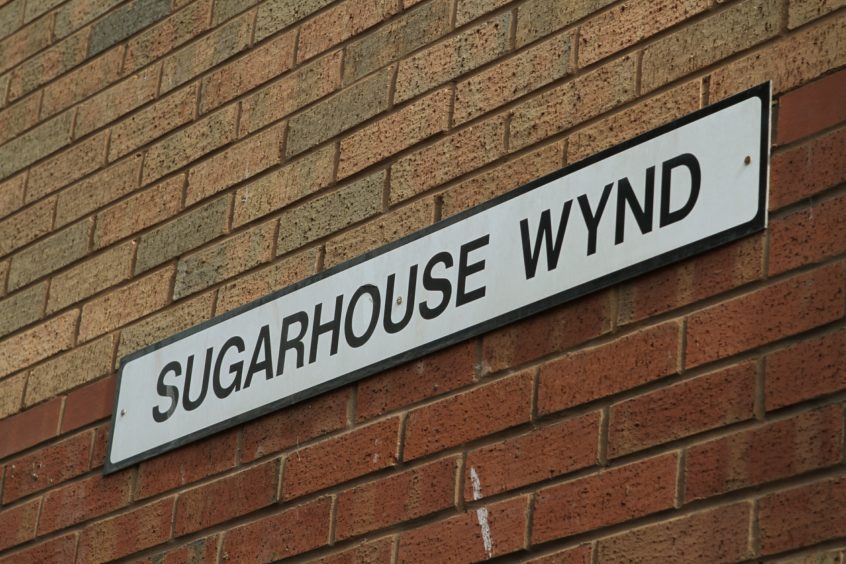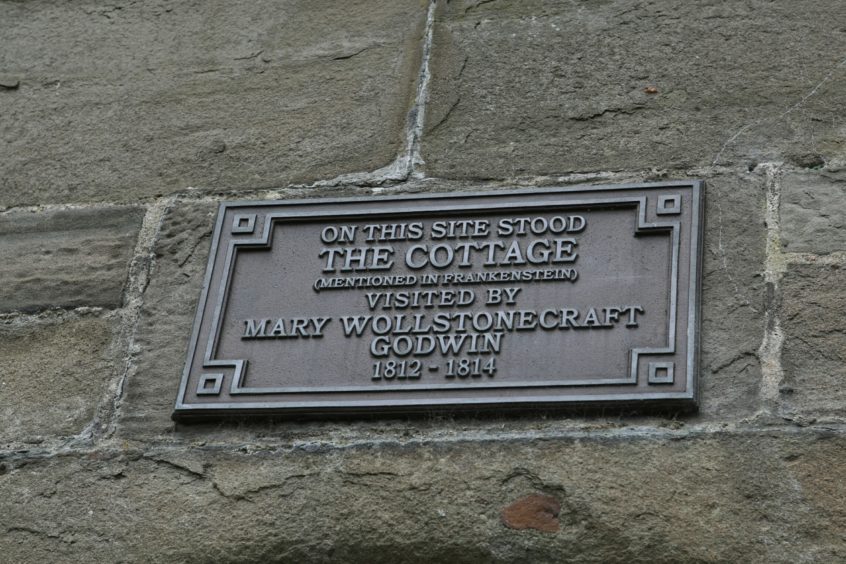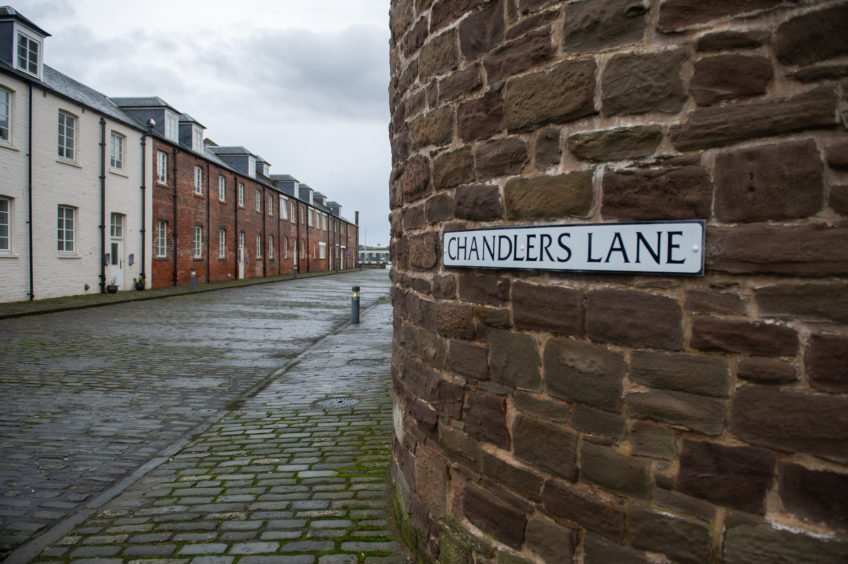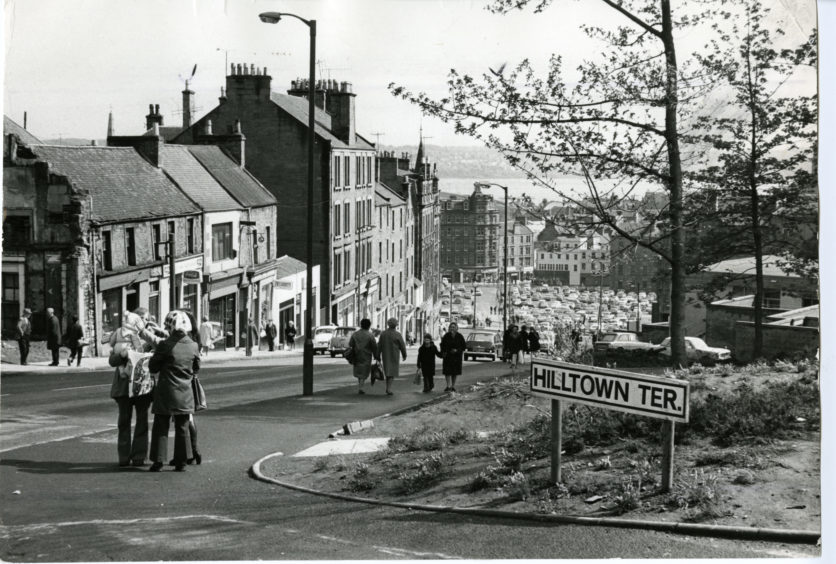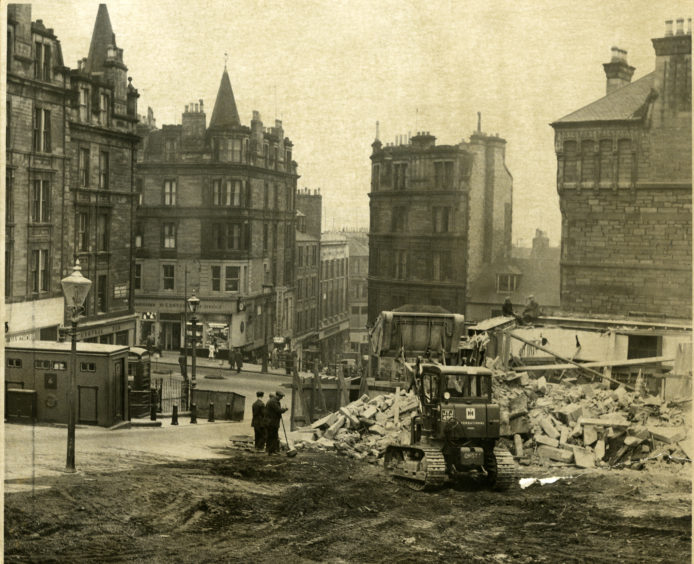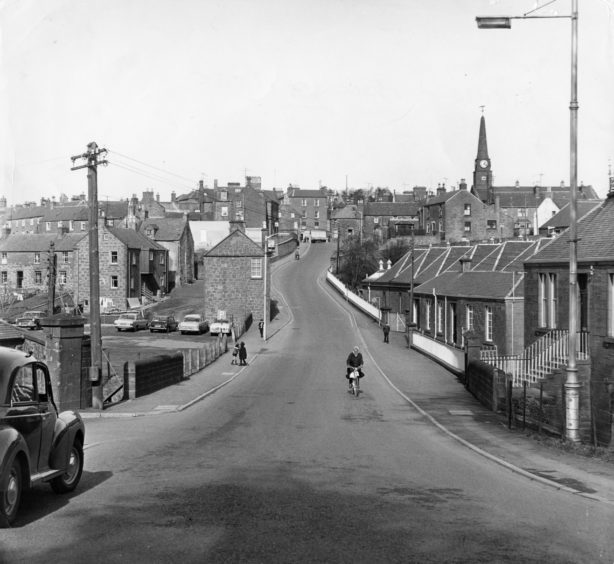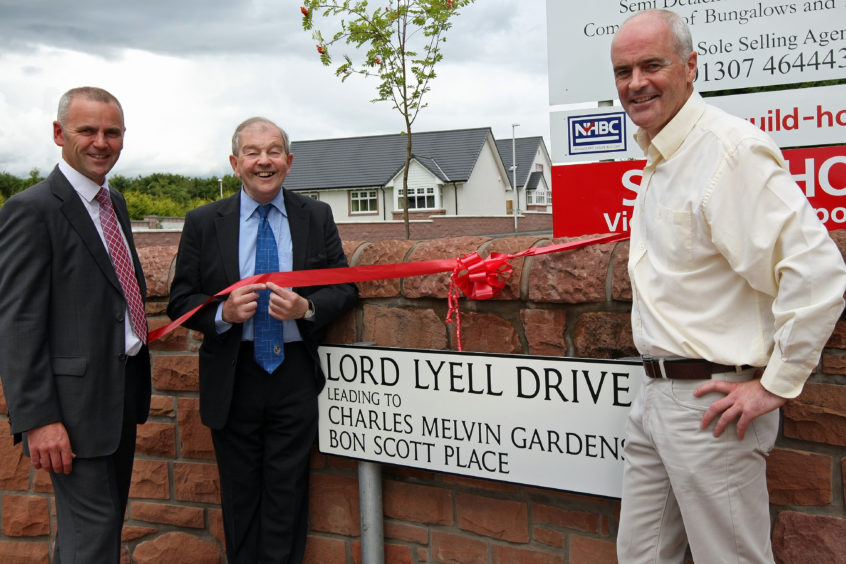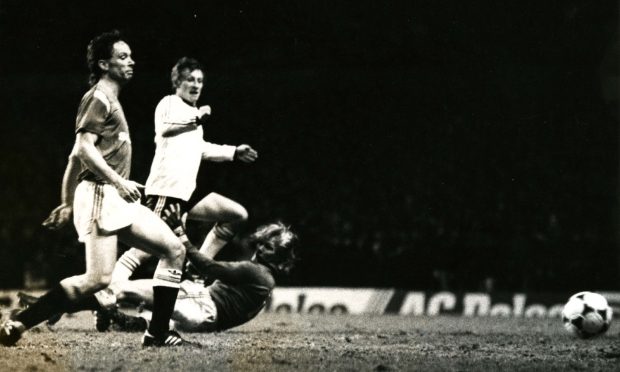From lanes named after butchers and jute barons to thoroughfares inspired by the Bash Street Kids, Dundee’s heritage is splashed all over its street signs.
Many of the names are quirky and curious. Take Peep-o-Day Lane, for example. And then there’s Beef Can Close, Smellies Lane, Couttie’s Wynd and Thorter Row.
Of course, many street names hail from old Dundee professions – Candle Lane, Soapwork Lane, and Cowgate, where the town herdsman, in medieval times, would drive cattle into the city centre.
Most recently Bash Street was created on a road in West Marketgait in honour of badly behaved Beano school pupils, The Bash Street Kids.
The characters were reputedly inspired by pupils at the High School of Dundee.
Over the decades, many of Dundee’s street names have been changed – for example, Victoria Road was named after Queen Victoria, but it was once called Bucklemaker Wynd.
Other streets, pends and wynds have been demolished, taking with them their wealth of myths and legends.
“Many of Dundee’s street names have interesting origins which can provide tantalising clues to the history of the city,” said local historian Dr Kenneth Baxter from the University of Dundee.
“Some remind us of lost landmarks. For instance, Castle Street takes its name from castle rock where the medieval Dundee Castle was believed to have stood.
“Others show lost industries such as East Whale Lane and Sugarhouse Wynd.
“Others commemorate lost houses.”
Here we take a look at some of the stories behind Dundee’s street names, past and present…
Seagate was the first area of settlement in Dundee, dating to around the 11th century, and is one of the city’s oldest surviving streets.
It was the market centre until the town gradually developed westwards.
“It was named as such because it ran down to the water,” said Sarah Aitken, assistant archivist at Dundee City Archives.
“Like Yeaman Shore, which was where the town met the river, the street name Seagate shows much how closer the Tay was to the town centre.”
Hawkhill today conjures up visions of student accommodation, industrial units or pub crawls.
But Hawkhill was once the rural area outside the city walls where people would hunt with hawks.
Westport, meanwhile, was a street leading to the western gate into the city and was where the keys to Dundee were handed to Mary Queen of Scots when she visited in 1561.
The Murraygate, which runs parallel to the Seagate, is another of the city’s oldest streets.
The name is thought to be derived from “Moray Gait” after Randolph, Earl of Moray, a companion-at-arms of William Wallace and Sir Robert the Bruce. Though pedestrianised long ago, sections of the former tramway tracks have been left as a memorial of the vintage transport.
Nethergate was “the lower way”, leading along the river front to the villages of Westfield and Springfield and then to Perth. However, it was originally named the Flukergait after a type of flat fish found in the Tay.
There was also Flukergait Port that became known as the Nethergait Port in the 16th century, possibly standing at the junction with South Tay Street.
The word “gait” means “way, and today’s West, North and East Marketgait have adopted this spelling.
Then there’s Thorter Row, which can be traced under that name from about 1488.
Before the old Overgate was obliterated to make way for the Overgate Shopping Centre, Thorter Row was a short lane between Overgate and High Street.
One story relating to its naming claims that at the time of the Reformation, priests had to hide. When some of them were found, they had their legs cut off at the knee and were made to walk on stumps down the lane.
One woman who lived there allegedly cried out the window: “Must ye torture us a’?” and thereafter the lane became known as Torture Row and later Thorter Row.
A less gruesome version says Thorter Row is simply a corruption of the word “athwort”, meaning from side to side, because the lane ran between the two larger streets.
Change of name
Many Dundee streets have acquired a change of name.
Barrack Street has been Friar’s Wynd or Vennel as it led to the Franciscan Greyfriars Monastery (destroyed in 1547-48) on what is now Meadowside. It then became Burial Wynd in reference to the Howff.
The name Barrack Street was adopted when Dudhope Castle was occupied by the military and the street was the main route to the castle.
And how many folk know that Dundee once boasted a Steam Loom Brae? It’s now known as Market Street, off East Dock Street, and it is thought the old name was earned because the first steam loom in the city came into operation in that area.
Another name that has confused and delighted many is Peep O’ Day Lane, between Blackscroft and East Dock Street.
It’s named after a long-gone mansion built in the area by the Honorable Walter Ogilvy of Clova, who became the sixth Earl of Airlie.
It’s thought he, or a later owner, gave the lane its name because the first glimpse of the dawning of a new day could be enjoyed from the mansion’s east-facing windows.
Many of Dundee’s street names have interesting origins which can provide tantalising clues to the history of the city.”
Couttie’s Wynd, the narrow lane which runs from Nethergate to Whitehall Crescent, takes its name from a 16th century butcher.
The story goes that the eccentric King James V liked to roam the country in disguise and, on one of his excursions, was saved from being murdered at the hands of robbers by a butcher called Couttie in Glen Ogilvy. Couttie was then given all rights to the wynd as a token of the king’s gratitude.
Pots and pans
Beef Can Close, which was off William Lane, between Victoria Road and King Street, was said once to have been a very poor area.
So destitute were the inhabitants that they were forced to pawn their cooking utensils.
But, having to find something to eat from, they got their hands on empty cans that had contained salted or processed meat and used them as pots and pans. The close took its name from that.
Hospital Wynd, which was at the top of the Hilltown, never boasted a hospital, but was granted to the city by the ruling sovereign of the time on condition that any rents went towards the upkeep of the hospital, or poorhouse as it was called then.
In St Roque’s Lane, off the Seagate, stood a chapel named after a Frenchman who devoted his life to the plague-stricken. It was here, outside the old city wall, that Dundee’s plague victims were banished so their infections were less likely to spread.
From buckles to shoelaces
Bucklemaker’s Wynd, now widened and re-named Victoria Road, owes its name to the buckles made there that once adorned the shoes of the fashionable.
Apparently, the demise of the industry therefore the demise of the name was thanks to a former Prince of Wales.
He showed up at a ball in London with shoelaces on his footwear and the shoe buckle industry promptly folded.
Lost industries
Several of Dundee’s lost industries are kept in memory only by the names of streets.
Soapwork Lane and Candle Lane were the location of the works of candlemaker Joseph Sanderson in the early 19th century.
Sugarhouse Wynd was so-named after the works there, the first manager of which was a Dutchman, Mr Wiedman, whose daughter Sarah was the mother of poet Robert Browning.
Dundee’s rich seafaring history hasn’t been forgotten either.
East and West Whale Lanes took their names from the whaling industry, as did Baffin Street from the infamously inhospitable Baffin Bay, known and unloved by the men of the whaling fleets.
Strangely, in a city with strong connections with the textile industry, there’s no Jute Street. There is, however, a Cotton Road.
The thoroughfare known as the Scourin’ Burn was renamed in favour of the “posher” Brook Street to move away from any slum connotations with poor folk doing their washing in the stream.
Think Americanmuir Road sounds exotic? Disappointingly, it has nothing to do with the USA. It was originally a road to Meric Muir and only gained the title when the growth of Dundee engulfed and vulgarised it.
Influential people
A popular traditional is to name streets after people.
The Maxwelltown area of Dundee once belonged to the Maxwell family of Tealing and streets in the district are given the Christian names of members of that family – Ann, Eliza, George, Alexander, Elizabeth and William.
Crichton Street is after famous surgeon John Crichton, whose house had to be acquired when the street was laid out and who made the condition it be named after him.
Caird Avenue, Ogilvie Street, Maitland Street and Malcolm Street are names all taken from Dundee’s jute barons.
The city’s busiest shopping centre, the Overgate was known as Argyllsgait in earlier times when it led from the old Marketgait out into the country past a mansion called Argyll’s Lodging. The name changed to Overgate, “the upper way” to the West Port, Hawkhill then Perth.
In 2012, the stretch between West Port roundabout and Lidl supermarket carpark became Argyllgait as a nod to the past.
The Wellgate Centre, which is built on the site of the old Wellgait, is so named because it was the way or street leading to the Lady Well dedicated to the city’s patron saint, St Mary, Our Lady, the mother of Christ.
Rotten Row
There was a Wellgait Port in the 17th Century, possibly erected to secure Wellgait and provide a barrier to those living on Rotten Row, now known as Hilltown, who were reputed to have been a source of “annoyance” to the inhabitants of Dundee.
Rotten Row was actually outside the border of 17th century Dundee and was chiefly occupied by bonnet makers.
The area was a barony – a small subdivision similar to a county – in its own right. The main road from Dundee to Forfar ran through the area.
Having been renamed the Barony of Hilltown after extending further north up the hill, the area was purchased from one of Dundee’s Lairds in 1697 and became part of the city.
There are a few places named Rotten Row in the UK and it’s thought the name may derive from the Saxon word “rot” meaning “pleasant and cheerful”, rather than the derogatory connotations it throws up today.
Meanwhile, the name Downfield has nothing to do with any meadow on a gradient.
A new village was founded in 1835 on land once owned by a poultry farmer, John Wishart, who dealt in feathers and down from his birds.
He rejected the idea of calling the village Wishartfield to perpetuate his own name.
He considered Featherfield before finally settling on Downfield.
Ardler street names have been inspired by famous golf courses – there’s Gleneagles Road, Turnberry Avenue and Troon Avenue.
Beyond Dundee
Across Tayside and Fife, there are quirky street names galore.
In Kirriemuir, there’s Bellies Brae. Could this be linked to the fact it’s on the site of an old jute works, with steam “bellowing out”?
The Wee Red Toon also boasts Bon Scott Way, named after the AC/DC frontman who was born in Kirrie.
In Arbroath, there’s Falkland Drive, which many imagine is named so because the Arbroath Marines famously went to the Falklands.
However, it’s thought to have been named long before then, but curiously sits next to the marine base.
There’s also a Mount Zion Brae in Arbroath, but the origins of this have proved tricky to pin down. Could the name have arisen from the steepness of the road up to the church?
In Broughty Ferry, Douglas Bader Street was named after the legendary amputee and air ace Sir Douglas Bader.
Muttonhall near Kirkcaldy appeared on maps until the 1960s and is an example of locals having a poke at pretension by twinning a mundane word like mutton with hall, which typically alluded to a high-status residence or building.
Another bizarre example is Cabbagehall near Leven in Fife but there’s an alternative theory about its origin. Here, it is said that a tailor bought the property with his “cabbage of cloth”’ – the scraps of material left over from cutting of patterns.
In Dysart, a suburb of Kirkcaldy, there’s a lane down by the harbour named Hot Pot Wynd.
It’s thought that this is derived from “hot pit” because underground coal fires used to burn here, their flames visible at night from the pit mouths.
Also in Fife, Coup-My-Horn hails from the concept of tipping a horn to have drink.
According to the Fife Place Name data site, the name was “perhaps applied humorously to a settlement where the occupants were especially partial to taking a drink”.
There’s also a local tradition that the name was connected with royal hunting parties from Falkland.
Silly UK street names
Many streets have humdrum names like High Street or Main Road, but there are a few gems sure to put a smile on the postie’s face.
For example, there’s Ha-Ha Road and Frying Pan Alley in London, There And Back Again Lane in Bristol, and Dick Place in Edinburgh.
Here’s a round-up of some of the funniest street names in the UK.
- Silly Lane, Forest of Bowland, Lancashire.
- Hurly Hawkin, Bishopbriggs.
- Christmas Pie Avenue, Flexford, Surrey.
- Dishlandtown Street, Arbroath, Angus.
- Backside Lane, Warmsworth, Doncaster.
- Butterbiggins Road, Glasgow.
- Boggy Bottom, Abbots Langley, Hertfordshire.
- Mincing Lane, Fenchurch, London.
- Ingle Pingle, Loughborough, Leicestershire.
- Dick Place, The Grange, Edinburgh.
- Pratt’s Bottom, Bromley.
- Bell End, Rowley Regis, West Midlands.
- Knick Knack Lane, Brixham, Devon.
- Goosedubbs, Glasgow.
- Smellies Lane, Dundee.
- Hooker Road, Norwich.
- Dumb Woman’s Lane, Rye, East Sussex.
- Spanker Lane, Belper, Derbyshire.
- Crotch Crescent, Marston, Oxfordshire.
- Bellenden Gardens, Edinburgh.
- Brokenwind, Newmachar, Aberdeenshire.
